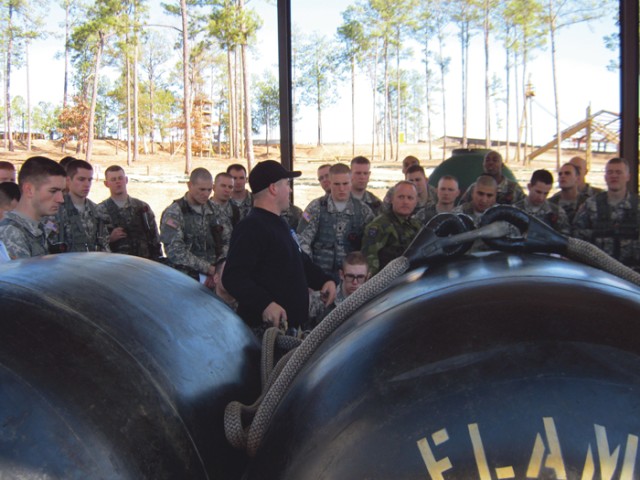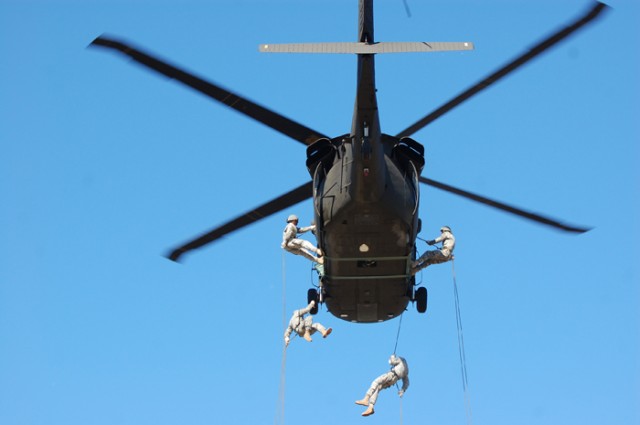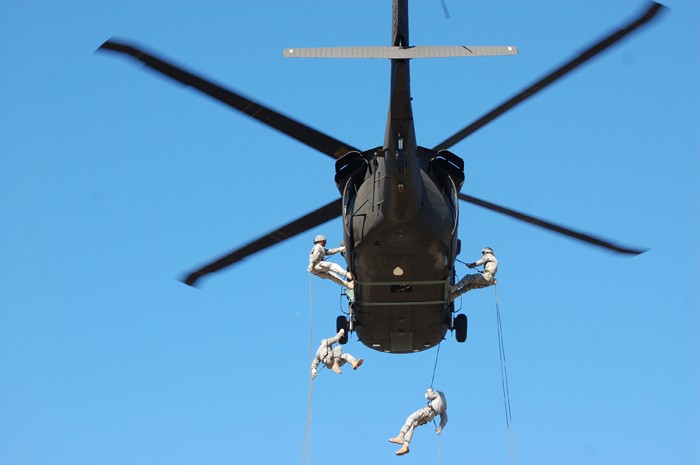FORT BENNING, Ga. - Air Assault School teaches students the tools they need to conduct combat air assault operations. "The toughest 11 days in the Army" is a common phrase among graduates, who include Soldiers from nearly every job specialty and international students.
With an average of 350 students per cycle vying for a slot in the course, several instructors from the Army National Guard's Fort Benning-based Warrior Training Center got together to discuss what it takes to succeed, why some students fail and how to ensure you get a slot.
Sixteen instructors with WTC's B Company teach the course. The Soldiers are from several states and most are combat veterans. In addition to teaching courses at Fort Benning, the instructors also travel to teach the Air Assault course to units worldwide.
Staff Sgt. James Hickman, a senior instructor with B Company, said a common misconception is that Air Assault School is "just about rappelling off a helicopter." In the 11-day course, students are trained and tested in combat air assault operations, rigging and sling load operations and rappelling from a helicopter. They learn aircraft safety, aero-medical evacuation procedures and pathfinder operations in addition to completing two foot marches for a total of 18 miles.
"You need to be physically fit, mentally stable, adaptable - or you will have trouble," said Staff Sgt. Bradley Hall.
Physical fitness and preparation play a huge role in making it from "zero" day to graduation day, said Staff Sgt. Louis Bravo.
"Zero" day is when all potential students are evaluated for a slot in the course, capped at 240.
They are evaluated on their physical and mental stamina by completing an obstacle course and two-mile run for time. Students who fail mandatory obstacles or the run are not admitted.
Bravo said the main reasons students don't get a slot are because they are not physically fit or are overweight. While some students have months to prepare for the course, some are last-minute backfills for students who couldn't attend.
"'When did you know you were coming' Four days ago,'" said Jeffery Tipton, listing a common answer students' give for being unprepared for the course.
The "Air Assault Success Guide" is posted on the WTC's website to help students prepare. The guide details how to improve your pull-ups and rope-climbing and outlines a physical fitness schedule to improve your foot marching ability.
For students who make it through "Zero" day, the real test begins.
An average of 30-40 students fail the course of those who make it past "Zero" day. Of those who fail, many typically don't make it through sling load testing in phase two.
Students must identify three out of four deficiencies on a rigged vehicle or load in less than two minutes. They get two attempts to pass.
Though students are taught everything they need to know during the course, Tipton said potential students can look to Air Assault-qualified personnel within their unit to help them prepare.
When it comes to earning the Air Assault Badge, all the instructors agreed that preparation on all levels is key.




Social Sharing